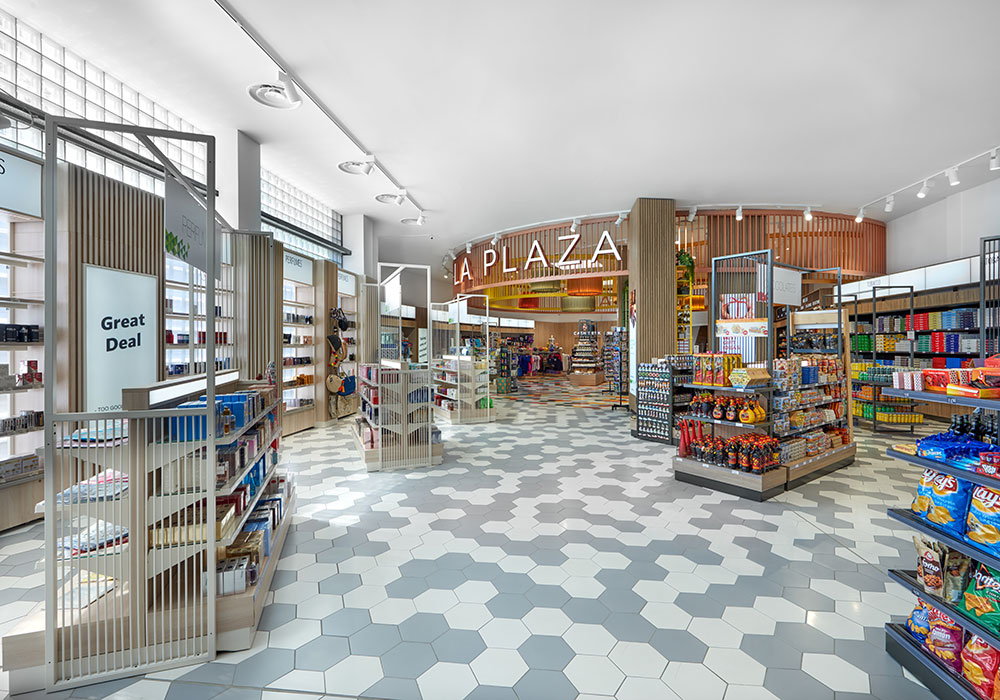Barcelona Cruise Port is one of many successful cruise ports worldwide, operating under the world’s largest cruise port operator, Global Ports Holding. With 17 ports in 9 countries, from Asia to the Caribbean, Global Ports Holding has a hefty influence on cruise ports globally. Austrian company umdasch provided the manufacturing and installation services, thereby contributing to the redesign of both Terminals A & B, a total of 950 sq m of retail space. This redesign, which sets the scene for the future of the travel retail sector, has given the terminals a new identity and has aligned the port with other global ports.
“This was a truly international project, with five nations involved and experts at every end,” said Michael Ripfl, General Manager, Global Travel Retail at umdasch. The design expertise provided by no.ova design and Lead Designer Marlene Pollhammer, combined with the swift work that was carried out by umdasch, resulted in efficient and high-quality execution. no.ova’s competency in the area of 3D visual renderings enabled an immersive design process, while The Store Makers from umdasch implemented a sturdy and clean concept, collaborating together for a joint cause. “It was an interesting experience for us as designers, working together with umdasch Store Makers, Michael Ripfl, and the client. It was a very successful collaboration, and it showed that we can have a focused, creative design unit working with two global organizations,” added Lewis Scott from no.ova design.
Credit: umdasch
Reminiscent of Gaudí
The design concept reflects the vibrant character of the city of Barcelona. From the beautiful floor designs, reminiscent of the artwork created by Antoni Gaudí, to the open markets, resembling those found across Spain, the concept envelops shoppers in the culture of Barcelona and entices them to explore the retail options that are available. The central area, called the “Plaza”, sits below canopies, surrounded by large concentric circles, a geometric theme that runs throughout the design as a means of dividing the larger area into more intimate, smaller ones. Two areas are clearly defined: the duty-free and local produce areas, which include Barcelona football team souvenirs.
Barcelona Actividades Maritimas, the operating retailer, realized that the current design and flow were deterring potential shoppers. Targeting the classic cruise travel tourists, the aim was to improve the average spend of passengers and diversify the items being bought to include local products. To achieve this goal, a new concept was designed to break up the passenger flow and create a more immersive experience. The idea follows a travel retail trend that has spread like wildfire – enabling travelers to continue exploring and experiencing the travel destination throughout the entire terminal.








